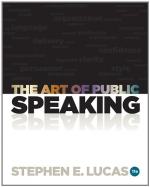An observant auditor will be interested in noticing the various devices a monologist will use to get the first round of laughter and applause. He works so hard because he knows an audience of units is an audience of indifferent critics, but once get them to laughing together and each single laugher sweeps a number of others with him, until the whole theatre is aroar and the entertainer has scored. These are meretricious schemes, to be sure, and do not savor in the least of inspiration, but crowds have not changed in their nature in a thousand years and the one law holds for the greatest preacher and the pettiest stump-speaker—you must fuse your audience or they will not warm to your message. The devices of the great orator may not be so obvious as those of the vaudeville monologist, but the principle is the same: he tries to strike some universal note that will have all his hearers feeling alike at the same time.
The evangelist knows this when he has the soloist sing some touching song just before the address. Or he will have the entire congregation sing, and that is the psychology of “Now everybody sing!” for he knows that they who will not join in the song are as yet outside the crowd. Many a time has the popular evangelist stopped in the middle of his talk, when he felt that his hearers were units instead of a molten mass (and a sensitive speaker can feel that condition most depressingly) and suddenly demanded that everyone arise and sing, or repeat aloud a familiar passage, or read in unison; or perhaps he has subtly left the thread of his discourse to tell a story that, from long experience, he knew would not fail to bring his hearers to a common feeling.
These things are important resources for the speaker, and happy is he who uses them worthily and not as a despicable charlatan. The difference between a demagogue and a leader is not so much a matter of method as of principle. Even the most dignified speaker must recognize the eternal laws of human nature. You are by no means urged to become a trickster on the platform—far from it!—but don’t kill your speech with dignity. To be icily correct is as silly as to rant. Do neither, but appeal to those world-old elements in your audience that have been recognized by all great speakers from Demosthenes to Sam Small, and see to it that you never debase your powers by arousing your hearers unworthily.
It is as hard to kindle enthusiasm in a scattered audience as to build a fire with scattered sticks. An audience to be converted into a crowd must be made to appear as a crowd. This cannot be done when they are widely scattered over a large seating space or when many empty benches separate the speaker from his hearers. Have your audience seated compactly. How many a preacher has bemoaned the enormous edifice over which what would normally be a large congregation has scattered in chilled and chilling solitude Sunday after Sunday! Bishop Brooks himself could not have inspired a congregation of one thousand souls seated in the vastness of St. Peter’s at Rome. In that colossal sanctuary it is only on great occasions which bring out the multitudes that the service is before the high altar—at other times the smaller side-chapels are used.




